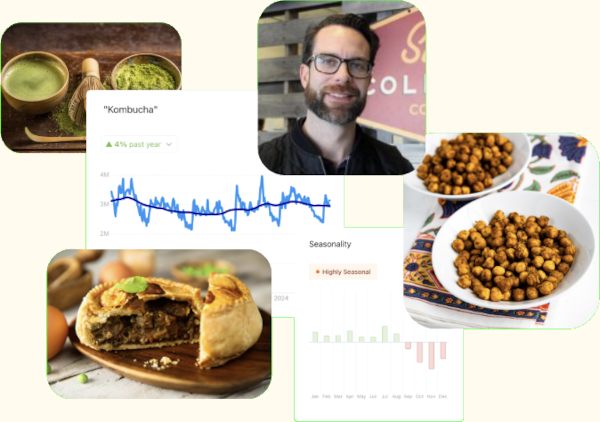Category Analysis - Greeting Cards

Overview of the Greeting Cards Industry
The greeting cards industry, a quaint yet surprisingly resilient sector, has long been a staple of human communication, providing a medium through which sentiments can be shared in ink and paper. Dating back centuries, this industry has evolved from intricate hand-drawn notes to mass-produced cards adorned with digital graphics and sentimental messages. In 2023, the global greeting cards market is estimated to be valued at approximately £22 billion, reflecting a mix of nostalgia and the modern consumer's quest for emotional connection.
Historically dominated by printed cards, the industry now embraces a multitude of styles, including musical, interactive, and even digital e-cards. However, beneath this charming facade lies a market grappling with the dual forces of digital disruption and changing consumer behaviors.
Recent Trends and Changes
In recent years, there has been a marked trend towards personalization, with consumers increasingly seeking out bespoke cards that reflect their unique relationships. This shift has spurred a surge in small businesses and independent artists who leverage platforms like Etsy and Instagram to showcase their creativity. As consumers look to establish a more personal touch in their greetings, the demand for customisable options has grown.
Moreover, the environmental conscience of modern consumers cannot be overlooked. Many are opting for eco-friendly greeting cards made from recycled materials or those that use sustainable processes, as reflected in the rising popularity of brands like Oozlefinch. This aligns with a broader trend towards sustainability and responsible consumerism, providing a crucial differentiator in a crowded market.
The Economics of the Greeting Cards Industry
The economics of the greeting cards industry showcase a mixed bag of opportunities and challenges. While the market has seen a slight contraction attributed to digital alternatives and changing consumer preferences, it remains resilient thanks to its emotional appeal. The industry is projected to see moderate growth of 1.8% CAGR over the next five years as it adapts to these shifts.
Interestingly, big-box retailers and online marketplaces like Amazon have reshaped distribution channels, creating both competition and opportunity for local retailers and independent creators. The rise of print-on-demand services has also transformed how cards reach consumers, reducing inventory costs and giving rise to an array of unique offerings.
Major Players in the Market
Several major players dominate the greeting cards landscape, each producing a diverse array of offerings to cater to various tastes. Hallmark Cards, perhaps the most recognisable name in the industry, continues to lead with its vast product range encompassing everything from heartfelt sentiments to humorous quips. Their enduring success lies in their ability to innovate while staying true to the emotional core of what greeting cards represent. For more information, visit Hallmark.
Another reputable player is American Greetings, which boasts a strong presence in both traditional and digital markets. Their commitment to merging traditional printing with innovative digital experiences reflects the current trend of blending old and new. More details can be found at American Greetings.
The Future of the Greeting Cards Industry
Looking ahead, the future of the greeting cards industry is likely to be shaped by further digital integration and the ongoing demand for authenticity in communication. The anticipation around augmented reality (AR) cards, which permit consumers to add a technological layer to their heartfelt messages, is growing. Innovators are poised to engage consumers in new ways that cater to both nostalgia and novelty, ensuring the industry's emotionally driven foundation remains intact while being redefined.
Moreover, as consumers continue to seek meaning and connection in their communications, businesses that focus on sustainable practices and authentic storytelling are positioning themselves favourably in this competitive landscape.
Conclusion
In conclusion, the greeting cards industry stands as a testament to the enduring human desire to connect and communicate sentiments. Despite the challenges posed by digital alternatives, the market's adaptability through customisation, sustainability initiatives, and technological innovations demonstrates an industry unafraid to evolve. With leading players continuing to thrive alongside a burgeoning network of independent creators, the future of greeting cards promises to be as heartfelt as the gestures they represent.
Example Products in this Category:
Brands in this Category:
| Name | Story | Brand Categories | |
|---|---|---|---|
| Name | Story | Brand Categories | |
| H!P Chocolate | H!P Chocolate was created in 2021 as a response to the need for delicious plant-based chocolate. The brand focuses on using high-quality single-origin Colombian cocoa combined with creamy oat milk to create a smooth chocolate experience without compromise. H!P is committed to sustainability, ethical sourcing, and driving positive change in the chocolate industry. | Vegan Chocolate,Greeting Cards,Sustainable Products | |
| Meriwether | We are probably the best company in the world. On most days we just sit around in our black turtlenecks smoking our pipes. In between smokes, we think up funny stuff. Most of it pointless and unnecessary. We will constantly amaze you... but not in a good way. If you need a gift or a card for someone with questionable taste and a great sense of humor, you've come to the right place... We design things that aren't really necessary and sell them to people who don't really want them... and we're damn good at it. | Greeting Cards,Gifts,Stationery,Home Goods | |
| RedCamper Picnic Supply | RedCamper was born from a love of summertime, road trips, and storytelling through food. It began with a family tradition of travel and preserving the essence of those experiences in small-batch, handcrafted products. The brand emphasizes the importance of using ethically sourced ingredients and sustainable practices, aiming to honor heritage and culture through its offerings. | Preserves,Cocktail Goods,Gift Sets,Greeting Cards |














